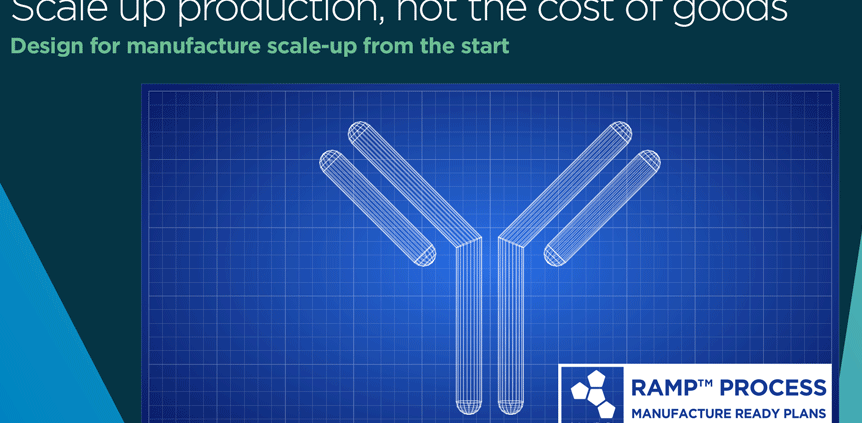Therapeutic antibodies: the scale of the manufacturing challenge
The most effective medicines in the world are of limited value if they can’t be produced in bulk, and at a reasonable cost. Therapeutic antibodies take years to develop. Without good oversight, each stage of development risks operating in a vacuum, with teams concentrating solely on their task before passing the candidate antibody onto the next team. An antibody developed with this “pass the parcel” approach may tick all the boxes for moving into clinical trials; it may even ace clinical trials. But if production cannot be scaled up for bulk manufacturing at a reasonable cost, the antibody is simply not commercially viable. Early engagement with manufacturing and commercialization experts and a helicopter view of the whole project from start to finish keeps the focus on developing an antibody that’s fit for purpose.
Scaling up determines cost of goods
Developers should look further than affinity alone when selecting a lead antibody. It would be a cruel twist of irony to develop a safe and effective antibody that cannot be manufactured in sufficient supply to treat all patients. Therapeutic antibodies are administered in high quantities to achieve the therapeutic effect – this can be in the range of milligrams to grams per patient per treatment cycle. For example, patients treated with the therapeutic antibody adalimumab (Humira™) take 80 mg on day one and then 40 mg every other week. The manufacturing process must keep up with the demand created by such dosing requirements.
Production is a key factor determining the ultimate cost of goods. Antibodies are churned out by genetically modified mammalian cells, grown in suspension in bioreactors. The antibody sequence is a critical “part” for the recombinant cell line “machinery”. As any mechanic will tell you, simple robust parts allow the machinery to run smoothly. In this case, well designed antibody sequence “parts” are easier for the cellular “machinery” to churn out in quantity.
Ideally, affinity maturation and sequence optimisation should optimise the antibody for ease of expression by mammalian cells. The yield, or titre, of antibody produced by these cells determines the ease of manufacturing and therefore the cost of goods. A yield of 2 g of antibody per litre of cell suspension is the threshold for a commercially viable antibody (1). Titre up to 4-5 g/L and higher have been reported by some companies.
The titre determines how many cells are needed to harvest enough antibody – this in turn determines the size and number of bioreactors needed and the size of the factory needed to house them. Bioreactors typically range from containing 1,000 litres of cell culture up to 20,000 litres. The cost and time required to purify the antibody out of the cell suspension is another factor in scaling up production, and the ultimate cost of goods.
Production for clinical trials versus the market
Drug development is a race against the clock. Time and investment pressure means that antibodies are first produced in small batches for clinical trials before, or alongside, technology transfer, production scale-up and stability studies. Ideally the small batch production for clinical trials should form the basis for the scaled up bulk manufacturing. For example, changing the cell line to achieve higher titres for bulk production would require validation in additional clinical trials, setting timelines back by years. Similarly, a shelf life of one year may be sufficient for clinical trials, but stability of 3 years is needed for the market. Drug development timelines don’t always allow for a 3-year stability study before clinical trials – but doing things the other way around can lead to a commercially unusable antibody, even if efficacy and safety are good.
Development strategies
One of the main business decisions in antibody development is whether to make or buy, i.e. whether to perform all steps of the process in-house, or outsource certain tasks to specialist providers. A third option is to partner with providers, in a risk-sharing agreement. Whatever route is chosen, teams should start seeking and integrating expert advice about scale-up and commercialisation from the early days of the drug development process.
RAMP™, our rational affinity maturation platform, accelerates and optimizes selection of lead antibody candidates that are “pre-screened” for manufacturing suitability. Our proprietary rational library design introduces mutations in both the CDR and framework regions, inspired by how B cells use somatic hypermutation to generate antibody diversity. In silico modelling then screens out variants with sequence liabilities known to compromise expression and stability.
Contact us to see how RAMPTM can generate lead candidates that are manufacture-ready
References

